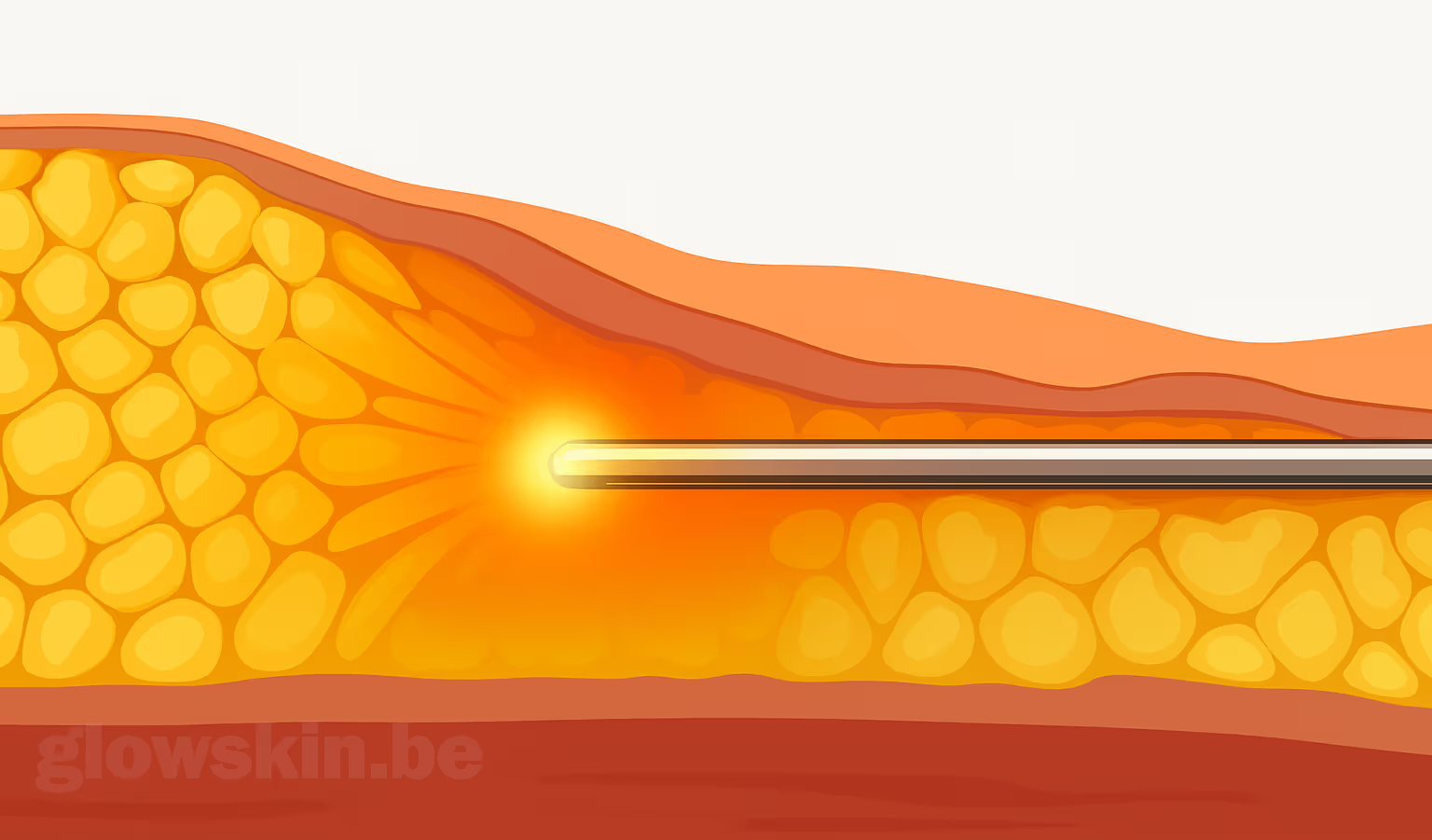What Is Laser-Assisted Liposuction?
Laser-Assisted Liposuction (LAL), also known by names like SmartLipo or SlimLipo, uses laser energy to melt fat before suctioning it out. In addition to liquefying fat, the laser stimulates collagen production, offering the potential for mild skin tightening in the treated area.
This technique can be performed as a minimally invasive procedure (through small incisions under local anesthesia), or in some cases, externally using non-invasive laser lipolysis that does not require suction. LAL is not a weight-loss solution but a tool for contouring specific areas that resist diet and exercise.
How Does It Work?
A thin laser fiber is inserted under the skin after local anesthesia is applied. The laser heats and breaks down fat cells, which are then removed with gentle suction. The heat also helps seal small blood vessels, reducing bruising and bleeding, and stimulates collagen for potential skin tightening.
In some cases, LAL is combined with other techniques, such as power-assisted liposuction, to enhance fat removal or refine contouring.

Benefits of LAL
Laser-assisted liposuction offers several benefits when used in the right context:
- Effective in small or delicate areas
- May result in less bruising and swelling compared to traditional methods
- Can provide mild skin tightening due to thermal effects
- Performed under local anesthesia with minimal downtime
- Useful for touch-ups or refinement after previous procedures
When Is Laser Liposuction Used?
LAL is most commonly used in smaller areas that require gentle treatment and may benefit from some skin contraction, such as:
- Chin and jawline
- Neck
- Upper arms
- Inner thighs
- Knees
- Male chest (gynecomastia)
- Minor revision or touch-up work
It is not typically used for large areas such as the abdomen, hips, or thighs where higher-volume or more aggressive methods are more effective.
Is Laser Lipo Better Than Other Techniques?
Laser-assisted liposuction is not necessarily better or worse — it serves a different purpose. While it offers certain advantages for small-area sculpting, it does not remove fat as efficiently or precisely as techniques like power-assisted liposuction (PAL) or ultrasound-assisted liposuction (VASER).
PAL is better suited for larger, fibrous areas and offers faster fat removal. VASER emulsifies fat and softens scar tissue, making it ideal for complex cases or high-definition sculpting. LAL, on the other hand, is best reserved for patients with small pockets of fat and some skin laxity.
Risks and Side Effects
Although generally safe, laser-assisted liposuction carries some risks:
- Burns or skin injury due to excessive heat
- Redness, swelling, or temporary numbness
- Prolonged healing in areas with thin or delicate skin
- In rare cases, infection or scarring
Most side effects are temporary and resolve with proper care, but results are highly dependent on the surgeon’s experience and technique.
Laser Liposuction vs. Non-Invasive Laser Treatments
It’s important to distinguish laser-assisted liposuction from non-invasive laser fat reduction:
- Laser-assisted liposuction involves a small incision and the physical removal of fat
- Non-invasive laser treatments (such as SculpSure) use external lasers to damage fat cells over time, with results appearing gradually
Non-invasive options may appeal to patients who want no downtime, but they are less effective and require multiple sessions. LAL typically delivers faster, more visible results in a single treatment.
Recovery Time and Expectations
Recovery from laser-assisted liposuction is typically short:
- Most patients resume daily activities within two to three days
- Compression garments are worn for one to two weeks
- Swelling and bruising typically subside within several days to a few weeks
- Final results are visible within one to three months
Patients are advised to maintain a stable weight to preserve long-term results.
Who Is a Good Candidate?
Good candidates for laser-assisted liposuction include those who:
- Are at or near their ideal body weight
- Have small, localized fat deposits
- Have mild skin laxity
- Are in good overall health
- Prefer a less invasive option with minimal downtime
LAL is not recommended for patients with a high BMI, significant skin laxity, or those seeking extensive reshaping.
Final Thoughts
Laser-assisted liposuction is a useful technique for small-area contouring and light skin tightening, particularly when used by a surgeon experienced in energy-based technologies. While it is not ideal for large-volume fat removal, it remains a valuable option for patients with localized concerns who want subtle but noticeable improvement.
For broader body contouring goals or more sculpted outcomes, techniques like Power-Assisted Liposuction (PAL), VASER Liposuction, or High-Definition Liposuction may be more appropriate.


